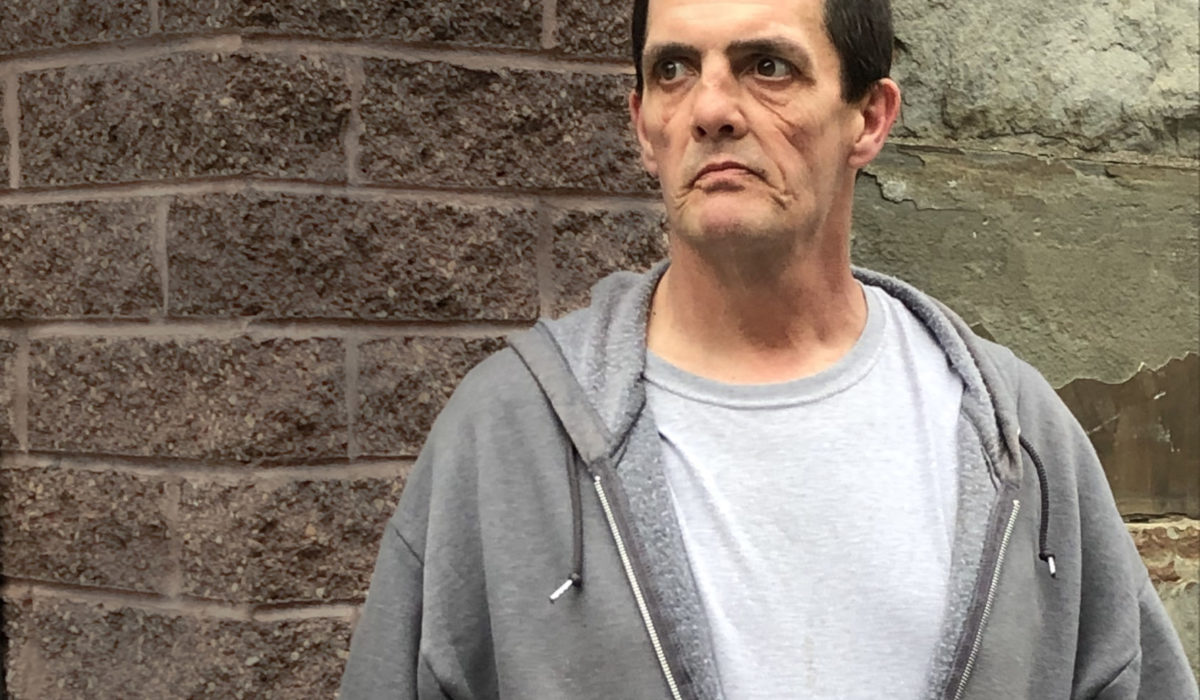Paul Robbins recently spent about six months in Curran-Fromhold Correctional Facility (CFCF), a Philadelphia’s men’s jail, for drug-related charges.
Robbins was on methadone when he was incarcerated, and he was able to remain on methadone throughout his time behind bars. The jail’s medication-assisted treatment (MAT) program for opioid use disorder allows inmates to continue treatment while on the inside.
“It helped me with cravings,” said Robbins, 50, who just finished rehab and is now living in a recovery house in Frankford. It was important for him to remain on methadone while at CFCF because “you can get anything you want in there,” he noted.
But drug circulation on the inside is only part of the reason why the city is expanding its MAT program for those in its jails. It’s also important to get individuals with opioid use disorder (OUD) on MAT so they have less chance of recidivism and a better chance of getting their lives in order once on the outside, said Bruce Herdman, chief of medical operations for the Philadelphia Department of Prisons.
Philadelphia is one of the few jail systems in the country to offer all three kinds of MAT— methadone, Suboxone and Vivitrol, the only evidence-based treatments for OUD—to inmates. 80 percent of the jail population suffers from some kind of substance use disorder, with 20 percent of those classified as OUD.
“It’s a horrendous disease that destroys not only the individual but also the family and employment,” Herdman said. “There’s a great need to address this.”
Every person who enters one of Philadelphia’s six jails is assessed on day two by a board-certified specialist in addiction medicine to see if the inmate is eligible for MAT. Anyone who comes in already on Suboxone or methadone can remain on these medications if they received those meds from a recognized community treatment center and were last dosed not long before incarceration. Those who come in with an OUD but who are not already in a program are then offered the choice to get onto Suboxone or, soon to be offered, Vivitrol, along with cognitive behavioral therapy, Herdman said.
Methadone, a full opioid agonist that has been around for decades, blocks the euphoric effects of opioids and must be taken every day, usually at a clinic. Suboxone, a partial agonist, attaches to the same receptors as opioids, blocking their effects. Outside incarceration settings, it is often given as a prescription so that individuals can take it at home. Vivitrol is a once-a-month shot that also blocks the effects of opioids, but people must be completely detoxed to receive it.
––
“People need to engage actively in the management of their own disease. We need to begin to engage people as early as we can around the concept of disease management as opposed to people becoming victims of their disease.”
– Roland Lamb, deputy commissioner, Dept. of Behavioral Health and Intellectual disAbility Services
––
Northeast Treatment Centers has provided methadone inside the jails for more than 12 years. About 450 patients, such as Robbins, are maintained on methadone while they are incarcerated and then go back to whatever community treatment center they attended before they entered jail.
For methadone alone combined with cognitive behavioral therapy provided inside, the price tag is about $1 million a year to the city, said Roland Lamb, deputy commissioner for the Philadelphia Department of Behavioral Health and Intellectual disAbility Services. But it is money well spent if it gives folks a chance to recover and to reduce recidivism, Lamb said.
“This is a chronically relapsing disease, and people behind the walls are no different,” Lamb said.
In December, the Philadelphia Department of Prison’s ability to prescribe Suboxone to men was interrupted when a physician who had the certification to write prescriptions for up to 275 individuals at a time left for another job, and the jail had to stop enrolling new male patients in this form of MAT. CFCF has just started re-enrolling men on Suboxone, and with the rest of the physicians being certified to prescribe for 100 patients at a time, the Philadelphia Department of Prisons will have the ability to engage up to 800 individuals at a time on Suboxone treatment by May, Herdman said.
Over the past 12 months, the Philadelphia Department of Prisons started close to 1,200 individuals on Suboxone inside, but most of them were released. When they leave jail, they are given a blister pack of Suboxone and a prescription to a community treatment center approved by the Philadelphia Department of Prisons.
Philadelphia is the only jail system issuing Suboxone pills to program participants on release. New York gives pills to sentenced inmates on release but writes prescriptions for pre-sentenced individuals. “We have eliminated that pharmacy barrier,” Herdman said.
In addition, Dr. George Woody, emeritus professor of psychiatry at the University of Pennsylvania’s Perelman School of Medicine, and Herdman have teamed up on a study to give inmates Vivitrol shots either upon release or with a prescription to a treatment center on the outside. They have not yet published their findings, but early indications show that it is more effective to give the shots before release.
“The relapse rate for opiate addiction is particularly high,” Woody said. “Among the prisoners, it’s like half or more within six weeks… Some relapse on the way out the door. They call their spouse and say pick me up some drugs.”
Furthermore, the mortality rate is very high with inmates with OUD being released, since they typically return to using at the pre-incarceration rate, even though their tolerance is low, putting them at an increased risk for overdose. “People who come out with no medication in their system [MAT], they’re going to be at high risk of dying,” Lamb said.
“The medications will reduce that. That’s why you want to start them on them before they leave,” Woody added.
Individuals also need to adopt a lifestyle change, moving away from old habits and haunts of drug use. “The medicine can help them get them out of that, but there’s a lot of work they have to do” through cognitive behavioral therapy, psychotherapy, some other form of counseling and/or 12-step fellowships, Woody said.
“People need to engage actively in the management of their own disease,” Lamb said. “We need to begin to engage people as early as we can around the concept of disease management as opposed to people becoming victims of their disease.”
Robbins is one of those who feels he is no longer a victim of his disease.
“I really don’t think about doing drugs,” he said, despite the fact that he was in active addiction for decades.
Robbins goes to AA meetings every evening and reports each morning to Girard Medical Center for his daily dose of methadone. Robbins is even considering going back to school to build upon his high school education.
“But right now,” he said, “I’m concentrating on staying clean.”
TWITTER: @CHARRISBOND





